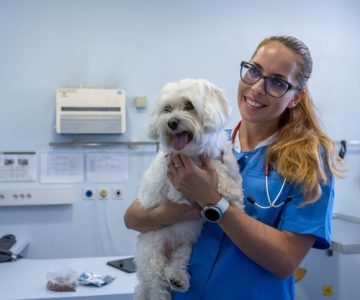What to Look for in a Wellness Plan for Pets?
As pet owners, we all want what’s best for our furry friends. Keeping them healthy and happy is a top priority and one of the best ways to ensure their well-being is by choosing the right pet wellness plan. But with so many options out there, it can be tricky to know what to look for. Let’s break down the essentials of a pet wellness plan so you can make an informed decision for your beloved companion.
What Are Wellness Plans for Pets?
A pet wellness plan is like a safety net for your pet’s health. It’s designed to provide preventative care, which can catch health issues early, potentially saving you from costly veterinary bills down the line. Here are some key components you should consider when evaluating a plan:
1. Preventative Care Inclusions
-
Regular check-ups: Regular physical examinations are vital for pets, just as they are for humans. These check-ups allow veterinarians to assess your pet’s overall health, detect any potential issues early on, and provide personalized recommendations for preventive care and management of existing conditions.
-
Vaccinations: Vaccinations are critical for preventing serious diseases that can pose significant health risks to pets. When selecting a wellness plan, ensure that it covers essential vaccinations tailored to your pet’s species, age, lifestyle, and risk factors. When working with a vet in Rainbow City, AL, be sure to discuss which vaccines are necessary for your pet’s well-being.
-
Parasite prevention: Effective parasite prevention is essential for keeping your pet healthy and comfortable. Look for a wellness plan that includes coverage for flea, tick, and heartworm prevention treatments. These preventive measures not only protect your pet from parasites but also reduce the risk of transmitting diseases to other pets and humans in your household.
-
Dental care: Dental health is an integral part of your pet’s overall well-being. A comprehensive wellness plan should encompass dental care services, including routine dental examinations, cleanings, and preventive treatments. These measures help prevent dental issues such as periodontal disease, tooth decay, and oral infections, which can lead to pain, discomfort, and systemic health problems if left untreated.
2. Cost Effectiveness
It’s essential to compare costs with the services provided. Some plans seem expensive upfront but can offer substantial savings on regular veterinary services over time. Additionally, look for a plan that doesn’t have hidden fees or unclear terms.
3. Flexible Plan Options
Choose a wellness plan that offers flexibility in terms of coverage options and pricing tiers. This allows you to select a plan that aligns with your pet’s specific needs and your budget. Look for customizable plans that allow you to add or remove services based on your preferences.
4. Access to Quality Veterinary Care
Ensure that the wellness plan provides access to a network of reputable veterinary providers. Look for plans that include coverage for visits to licensed veterinarians, specialists, and emergency care facilities. Access to quality veterinary care is essential for addressing your pet’s health concerns promptly and effectively.
5. Nutritional Support and Dietary Guidance
Look for wellness plans that offer nutritional support and dietary guidance tailored to your pet’s specific needs. This may include consultations with veterinary nutritionists, personalized diet plans, and access to high-quality pet food and supplements. Proper nutrition plays a crucial role in maintaining your pet’s health and preventing common ailments.
6. Behavioural Health Services
Some wellness plans may offer coverage for behavioral health services to address common behavioral issues in pets, such as anxiety, aggression, and compulsive behaviors. Look for plans that provide access to certified animal behaviorists or training classes to help improve your pet’s behavior and strengthen your bond.
7. Additional Benefits and Discounts
Consider wellness plans that offer additional benefits and discounts, such as reduced rates on prescription medications, grooming services, boarding, and pet insurance premiums. These perks can help you save money on routine pet care expenses and provide added value to your wellness plan.
8. Transparent Pricing and Terms
Finally, ensure that the wellness plan offers transparent pricing and clear terms of service. Understand what is covered under the plan, any exclusions or limitations, and how billing and reimbursement processes work. Read the fine print carefully and ask questions to clarify any concerns before enrolling in a plan.
Where Do Veterinary Diagnostic Labs Come In?
When your pet is under the weather, diagnostic tests can be lifesaving. Here’s what you should know about a pet laboratory in Rainbow City, AL, or any reputable diagnostic center:
Range of Diagnostic Services
-
Bloodwork: To assess organ function and detect conditions such as anemia or infection.
-
Urinalysis: Useful for diagnosing urinary tract infections and other issues.
-
Fecal exams: Important for checking for parasites that can affect your pet’s digestive system.
-
Imaging: Including x-rays and ultrasounds to visualize internal problems.
Quality and Accuracy of the Lab
The quality of the lab conducting your pet’s tests is as crucial as the tests themselves. Ensure the lab has certified technicians, state-of-the-art equipment, and a reputation for reliable results.
Speed of Results
Timely test results can be critical. Find out the average turnaround times for tests and whether the lab has a system for promptly communicating results to your veterinarian.
Wrapping Up
Remember that a proactive approach is key. Regular health checks, proper diagnostic services, and timely vaccinations are the building blocks of a robust wellness plan. A thoughtful selection today can lead to a healthier, more vibrant life for your pet tomorrow. Don’t hesitate to ask your vet for advice—they’re your best resource for keeping your pet at their best.





